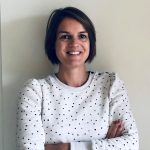Blog series: WUR shares Data on Global Yield Gap and Water Productivity Atlas
It is inescapable: in science there is an increasing focus on sharing research data and code. The oft-used slogan for data sharing by research institutions and funders is “as open as possible, as closed as necessary”. Wageningen University and Research have also included this principle in its strategic plan 2019-2022 (no surprise to the regular readers of this Open Science channel).
A selection of WUR’s open data and data applications are accessible via the WUR Data Portal. Here, we showcase inspiring examples of research.
In this blog series we talk to WUR researchers whose database platform is currently spotlighted in the Data Portal. What do they think about data sharing? Do they encounter barriers? And how can they be better supported?
For this blog post we interviewed Priska Prasetya and Martin van Ittersum about the Global Yield Gap Atlas. Priska started at WUR in October 2020, as the Business Developer for the Global Yield Gap Atlas. Priska is part of the Plant Sciences Group and collaborates a lot with the Earth Informatics Group. Martin has been working at WUR in various groups since 1988. Martin is a professor at the Plant Production Systems Group and co-leading the Global Yield Atlas project since its inception.
What is GYGA, how did it start and how has it developed through the years?
Priska: “The Global Yield Gap Atlas (GYGA) is an online database platform containing data on crop production potential (yield gap) and agronomic data (e.g. soil, crop management system) of the world’s key crops. It started as a research project in 2011, together with a partner in USA, University Nebraska-Lincoln. Over the years, GYGA has been successfully built and expanded with additional crops, countries, and indicators. Today, GYGA has grown into a global database platform with a coverage across 70 countries and five continents for 13 major crops (see this link: https://www.yieldgap.org/web/guest/yieldgaps)
GYGA has been developed over the years through project funding. The challenge is to fund the operation, maintenance, and upgrades of the platform. With the support of Road to Innovation Grant from the Corporate Value Creation, we want to explore the value creation route for GYGA.”
GYGA is an international project, how do you ensure that all parties use standard protocols and keep data sets aligned (and interoperable)?
Priska: “GYGA differentiates itself by:
- Having a global protocol to ensure a consistent, transparent, and reproducible bottom-up approach to collect data that can be scaled up from point, region, national and global level.
- The global protocol is published on the GYGA website, where all methods are summarized.
- This global protocol has been developed by agronomists to ensure its agronomic rigor.
- Transparency and traceability of methods and data used in GYGA will remain a unique differentiator in comparison to other data sources on yield gap.”
How do you ensure that agronomists across the 70 countries use the global protocol in the correct way?
Martin: “the GYGA core team (WUR and University Nebraska-Lincoln) always work together with experts from a country to be added. Sometimes the country experts are in the lead, and quite often WUR and UNL is in the lead, but always in a collaboration to ensure, on the one hand, proper application of the global protocol and on the other hand, the use of the best local data and evaluation of all results against local expertise.”
GYGA data is free to download; how has that been achieved?
Priska: “The data from GYGA are currently categorized as ‘Restricted access’ and available for use under the Creative Commons — Attribution-NonCommercial-ShareAlike 4.0 International — CC BY-NC-SA 4.0. This means that: Research institutions/academia, donors, governments, NGOs, and foundations can access the data from GYGA for free. Private companies downloading the data for commercial purposes will need to obtain a commercial license. We are now establishing stricter data access restrictions for private companies. Earlier, they could still download the data even without paying. Now, private companies who register themselves as ‘Private company’ need to pay first before being able to access the data.”
In 2021 we aim to increase the findability of WUR Data. Are there any barriers to mention from your perspective? Any solutions?
Martin: “I would not say real barriers, but cross-linkage on other key websites with data on food production, food security and natural resources and visibility on the WUR Data Portal will certainly help with further visibility and findability of our data.”
Priska’s view on the principle as open as possible, as closed as needed: “Sharing is Key! For the purpose of valorization of GYGA as a database platform, data sharing is key in order to utilize the maximum potential of the data and to maximize the socio-economic impact that can be created from the application of GYGA data.”
Which data sharing incentives do you see for researchers?
Martin: “GYGA currently has more than 4000 data downloads per year and many, many more Atlas visitors. That success would never have occurred without data sharing. We published all our key papers open-access from the start and made sure that our data were freely available. In that way new countries feel comfortable to also share their data. And of course, joint publications are also a strong inventive.”
Thank you very much Priska and Martin for this interview! Impressive how many countries are involved and how much data is being shared.
Within WUR, the Wageningen Data Competence Center is your first entry point for questions on Data Science, Research Data Infrastructure or Data Management. Please contact us when you have questions on Data or Code Sharing, licensing or data sharing agreements.

